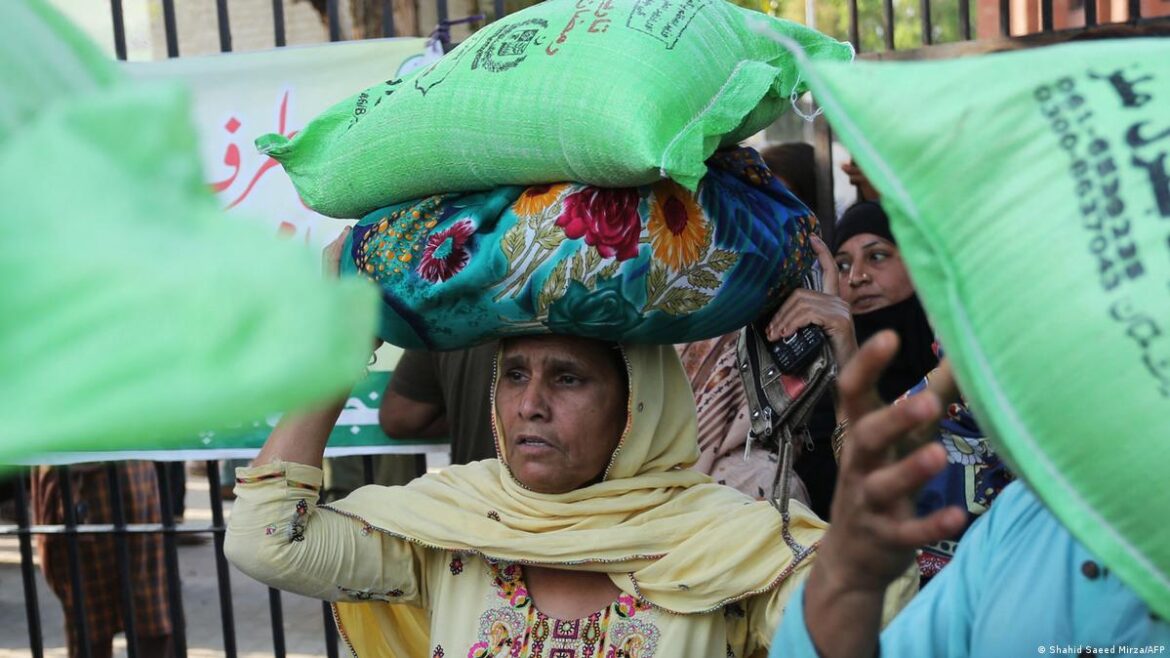By Staff Reporter
ISLAMABAD: Pakistan’s inflation pace eased for a third month in a row to 20.7 percent year-on-year in March, marking the lowest rate since May 2022, the Pakistan Bureau of Statistics (PBS) data showed on Monday.
The month-on-month increase in March stood at 1.7 percent.
The Consumer Price Index (CPI) inflation figure fell below the central bank’s key policy rate of 22 percent for the first time in over three years. The Ministry of Finance had projected March inflation to be between 22.5-23.5 percent, but the actual figures suggest a downward trend, reinforcing expectations that the key interest rate may soon be reduced.
“This is the lowest inflation after 21 months and it is down from a peak of 37.97 percent seen in May 2023,” said Mohammad Sohail, CEO, brokerage Topline Securities. “We anticipate CPI inflation in coming months to fall below 20 percent primarily due to the high base effect of last year. The recent increase in petrol prices does not change our projections. We expect average inflation for FY24 to clock in at 25 percent.”
The July-March average inflation was marginally higher at 27.22 percent compared to 27.19 percent in the same period last year.
Urban CPI inflation rose to 21.9 percent year-on-year in March, a decrease from 24.9 percent the previous month and 33.0 percent in March 2023. Rural CPI inflation was recorded at 19.0 percent, down from 20.5 percent in February and a significant drop from 38.9 percent in March of the previous year.
Food inflation in March was up 2.91 percent month-on-month. Food prices that have increased on a month-on-month basis include Tomatoes (+52 percent), Onions (+28 percent), Potatoes (+24 percent), Fresh Fruits (+22 percent), and Fresh Vegetables (+13 percent) among others.
However, the year-on-year uptick in food inflation was driven by an increase in the prices of Tomatoes (+188 percent), Onions (+84 percent), Fresh Vegetables (+55 percent), Condiments & Spices (+49 percent), and Gur (+44 percent) among others.
Housing, Water, & Electricity, which contributes 24 percent to the CPI, rose by 36.60 percent year-on-year and 1.50 percent month-on-month in March. The Transport index, which comprises fuel prices, fell by 0.15 percent month-on-month while up 11.16 percent year-on-year in March.
Analysts caution that while inflation is receding, it is not at the expected pace, and several factors, including currency parity, dollar flows, global interest rates, and the IMF’s new program, will influence any significant rate change decisions.
“As far as the policy rate easing goes, though inflation is gradually receding (but largely due to the high base-effect of last year), not at the pace as expected earlier and rural core inflation as well as general CPI still hovering in the 20s, it will take some more months before one should expect monetary easing from monetary authorities,” said analyst Khurram Shehzad.
“A lot of factors, besides inflation figures at home, such as the currency parity and outlook, dollar flows, global interest rate scenario, IMF’s new program, and the detailed action plan by the fiscal authorities in this regard, would matter in any significant rate change decision by the monetary authorities.”
Shehzad, however, said with March figures, monthly inflation is now contained within the policy rate range, with real rates turning positive in the 2 percent range. “If sustained ahead, this should reignite hopes for gradual easing in the quarters to come.”
The State Bank of Pakistan’s (SBP) Monetary Policy Committee (MPC) has maintained the key policy rate at 22 percent for six consecutive meetings. The next MPC meeting is scheduled for April 29.
Copyright © 2021 Independent Pakistan | All rights reserved




